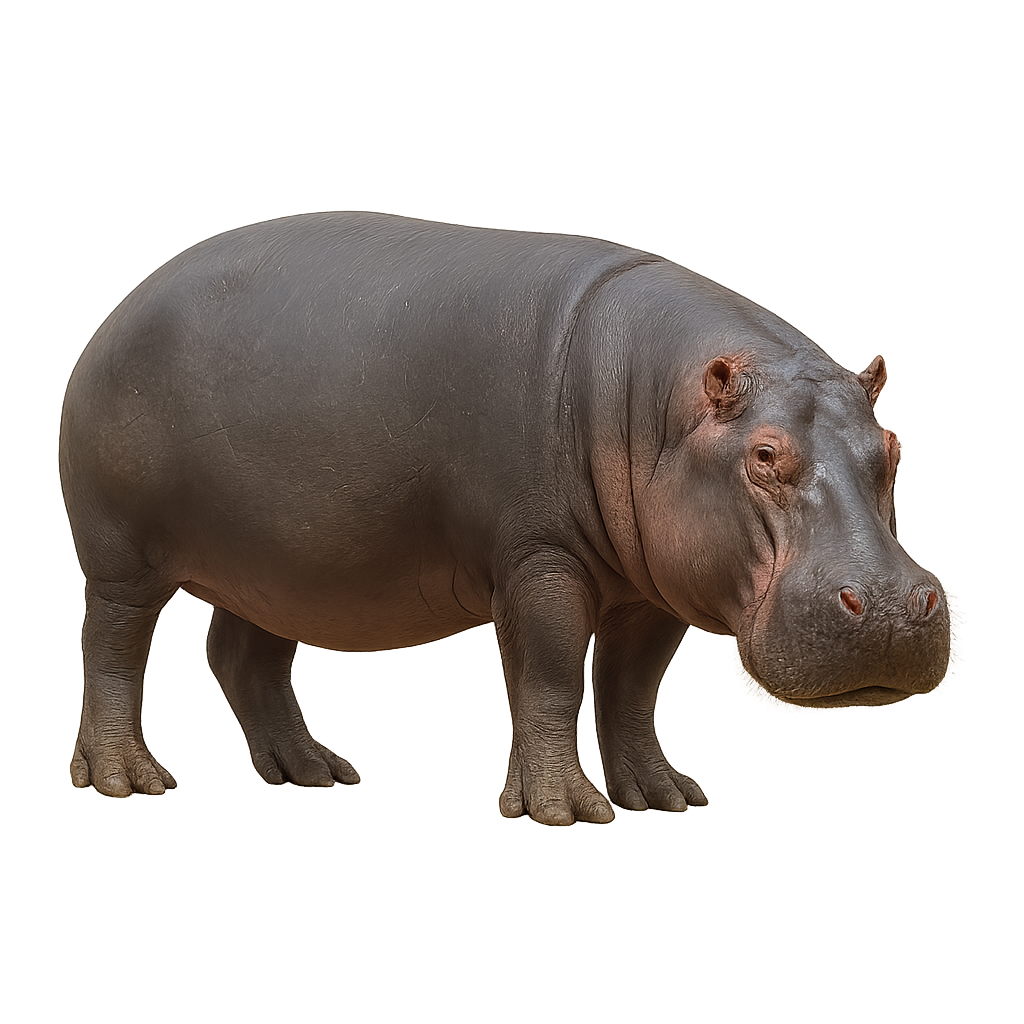Observe and photograph a species in its natural habitat
Learn where and when to observe a species in the wild, how to recognize it in the field, and what habitats it lives in. Get photography tips adapted to its behavior and capture stunning images without disturbing the animal. For full details, open the complete profile in the WildlifePhotographer app.
Common Hippopotamus
Scientific name: Hippopotamus amphibius

IUCN Status: Vulnerable
Family: HIPPOPOTAMIDAE
Group: Mammals
Shyness: Suspicious
Safe distance: 110 m
Breeding season / Courtship: 15.11-15.01
Gestation: 240 jours
Births: 15.06-15.08
Habitat:
Rivers, lakes, and swampy areas
Description:
The Common Hippopotamus is a large semi-aquatic mammal, easily recognizable by its massive body and thick skin. It measures between 3.3 and 4.5 meters in length, with a weight reaching 1,500 to 1,800 kg, or more. Its body is primarily gray, with pink skin underneath the belly and ears and eyes positioned high on its head, allowing it to see and hear while submerged in water. Hippos are primarily herbivores, feeding on grass and aquatic vegetation in large quantities, mostly at night. They spend most of their time in the water to regulate their body temperature and prevent dehydration, while still being able to move quickly on land. The Common Hippopotamus primarily inhabits sub-Saharan Africa, in rivers, lakes, and swamps. Although it is a powerful and territorial animal, it is threatened by habitat loss, hunting, and conflicts with human populations.
Recommended lens:
>=70-200 mm
Photography tips:
Stay in a vehicle or at a safe distance: When observing or photographing hippos, it is essential to stay in a vehicle (during a safari) or at a sufficient distance to avoid disturbing them. Never attempt to approach them on foot.
Photograph early in the morning or late in the afternoon, when soft light is ideal and hippos are often more active, found in the water or moving near the shores.
Be discreet and respect their space. The hippopotamus is a large animal and can become aggressive if its limits are crossed. Always maintain a respectful distance to avoid disturbing its natural behavior, especially when resting or feeding.
Ready to take action?
Choose your platform and start your free trial today



